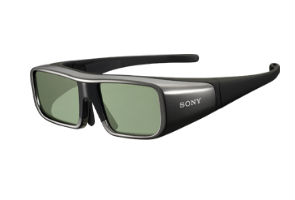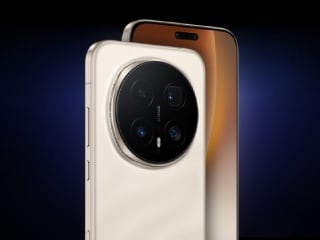Sony shows wearable 3-D personal theater
By Associated Press | Updated: 7 June 2012 16:18 IST

Click Here to Add Gadgets360 As A Trusted Source

Advertisement
Sony says it will start selling a head mounted display that provides a 3-D theater of music videos, movies and games, targeting people who prefer solitary entertainment rather than sitting in front of a TV with family or friends.
Sony Corp. said Wednesday that the 60,000 yen ($800) "HMZ personal 3-D viewer" is set to go on sale Nov. 11 in Japan, and is planned for the U.S. and Europe, perhaps in time for Christmas, although dates have not yet been set.
Resembling a futuristic visor, HMZ, which stands for "head mounted display," is worn like chunky goggles-and-earphones in one.
The footage before the viewer - a music video of a Japanese singer in the demonstration for reporters in Tokyo - is crystal-clear and feels like peering into a dolls house in which a real-life tiny singer is moving.
It seems unlikely that most people - or even technology enthusiasts - will want to buy a product that involves sitting alone and wearing a little helmet. The HMZ might not be Sony's long awaited answer to Apple's iPod or iPad but just another quirky device packed with cutting-edge technology that is headed for a limited niche following.
A 3-D wearable gaming machine Virtual Boy from Nintendo Co., which went on sale in the 1990s, bombed, partly because of the bulky headgear required as well as the image being all red.
Sony's latest product is far more sophisticated. Sony officials said the gadget delivers the immersive experience of a home-theater, or the equivalent of sitting in one of the best seats of a movie theater.
The machine, which hooks up to your Blu-ray disc player or your game machine, is targeting people who want to enjoy movies or games alone.
It is not recommended for people 15 years old and younger because some experts believe overly stimulating imagery is not good for teenagers whose brains are still developing, according to Shigeru Kato, a Sony vice president.
On the plus side, consumers are growing more accustomed to 3-D these days, with the arrival of 3-D TVs and game machines. Kato noted the most popular movies last year, including "Avatar" and "Toy Story 3," were 3-D.
HMZ uses Sony's own OLED screen, a relatively new kind of display that relays superb image quality and color, compared to the more prevalent liquid crystal and plasma displays used in laptops and flat-panel TVs.
Kato said the major challenge had been making a very small display without compromising image quality.
Sony Corp. said Wednesday that the 60,000 yen ($800) "HMZ personal 3-D viewer" is set to go on sale Nov. 11 in Japan, and is planned for the U.S. and Europe, perhaps in time for Christmas, although dates have not yet been set.
Resembling a futuristic visor, HMZ, which stands for "head mounted display," is worn like chunky goggles-and-earphones in one.
The footage before the viewer - a music video of a Japanese singer in the demonstration for reporters in Tokyo - is crystal-clear and feels like peering into a dolls house in which a real-life tiny singer is moving.
It seems unlikely that most people - or even technology enthusiasts - will want to buy a product that involves sitting alone and wearing a little helmet. The HMZ might not be Sony's long awaited answer to Apple's iPod or iPad but just another quirky device packed with cutting-edge technology that is headed for a limited niche following.
A 3-D wearable gaming machine Virtual Boy from Nintendo Co., which went on sale in the 1990s, bombed, partly because of the bulky headgear required as well as the image being all red.
Sony's latest product is far more sophisticated. Sony officials said the gadget delivers the immersive experience of a home-theater, or the equivalent of sitting in one of the best seats of a movie theater.
The machine, which hooks up to your Blu-ray disc player or your game machine, is targeting people who want to enjoy movies or games alone.
It is not recommended for people 15 years old and younger because some experts believe overly stimulating imagery is not good for teenagers whose brains are still developing, according to Shigeru Kato, a Sony vice president.
On the plus side, consumers are growing more accustomed to 3-D these days, with the arrival of 3-D TVs and game machines. Kato noted the most popular movies last year, including "Avatar" and "Toy Story 3," were 3-D.
HMZ uses Sony's own OLED screen, a relatively new kind of display that relays superb image quality and color, compared to the more prevalent liquid crystal and plasma displays used in laptops and flat-panel TVs.
Kato said the major challenge had been making a very small display without compromising image quality.
Comments
Get your daily dose of tech news, reviews, and insights, in under 80 characters on Gadgets 360 Turbo. Connect with fellow tech lovers on our Forum. Follow us on X, Facebook, WhatsApp, Threads and Google News for instant updates. Catch all the action on our YouTube channel.
Popular on Gadgets
- Samsung Galaxy Unpacked 2025
- ChatGPT
- Redmi Note 14 Pro+
- iPhone 16
- Apple Vision Pro
- Oneplus 12
- OnePlus Nord CE 3 Lite 5G
- iPhone 13
- Xiaomi 14 Pro
- Oppo Find N3
- Tecno Spark Go (2023)
- Realme V30
- Best Phones Under 25000
- Samsung Galaxy S24 Series
- Cryptocurrency
- iQoo 12
- Samsung Galaxy S24 Ultra
- Giottus
- Samsung Galaxy Z Flip 5
- Apple 'Scary Fast'
- Housefull 5
- GoPro Hero 12 Black Review
- Invincible Season 2
- JioGlass
- HD Ready TV
- Laptop Under 50000
- Smartwatch Under 10000
- Latest Mobile Phones
- Compare Phones
Latest Gadgets
- Honor Win RT
- Honor Win
- Xiaomi 17 Ultra Leica Edition
- Xiaomi 17 Ultra
- Huawei Nova 15
- Huawei Nova 15 Pro
- Huawei Nova 15 Ultra
- OnePlus 15R
- Asus ProArt P16
- MacBook Pro 14-inch (M5, 2025)
- OPPO Pad Air 5
- Huawei MatePad 11.5 (2026)
- Xiaomi Watch 5
- Huawei Watch 10th Anniversary Edition
- Acerpure Nitro Z Series 100-inch QLED TV
- Samsung 43 Inch LED Ultra HD (4K) Smart TV (UA43UE81AFULXL)
- Asus ROG Ally
- Nintendo Switch Lite
- Haier 1.6 Ton 5 Star Inverter Split AC (HSU19G-MZAID5BN-INV)
- Haier 1.6 Ton 5 Star Inverter Split AC (HSU19G-MZAIM5BN-INV)
© Copyright Red Pixels Ventures Limited 2025. All rights reserved.












